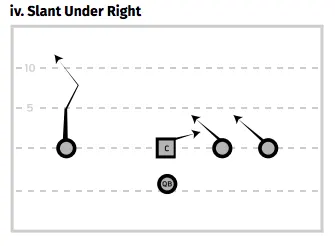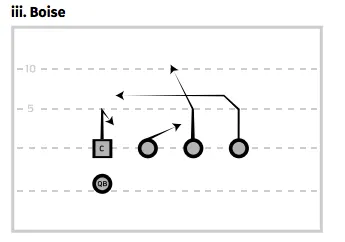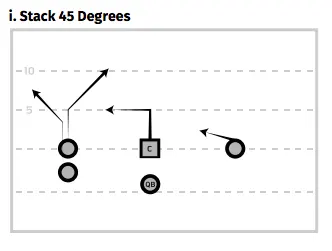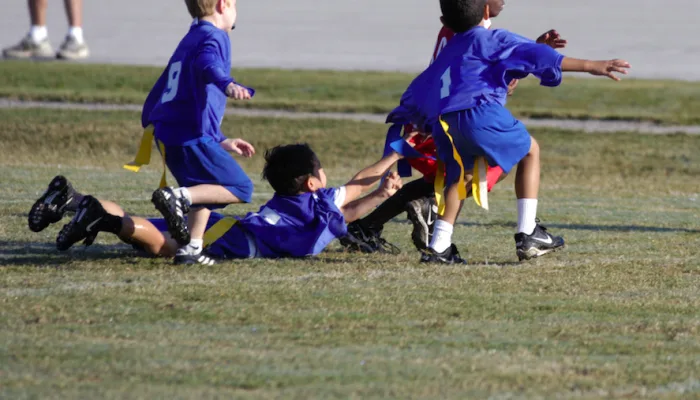
From only 5.5 million participants in 2014 to over 6.5 million in 2018, flag football programs have been on a steady rise in recent years according to Statista. Along with this increased participation comes an increase in friendly competition.
As a coach or administrator of a flag football program, you may be wondering how you can dominate your competition at any age level while also teaching your young athletes the proper way to play and enjoy the game of football.
Regardless of your goals on the field, learning how to call youth flag football plays successfully is a great place to gain traction as a fun and competitive program.
Understanding Your Leagues Rules
When it comes to play calling and teaching kids how to play flag football, the first thing you need to teach is the rules of the league your program is registered with. Typically, the flag football rules look a lot like they do in regular youth football with the main exception being rules focused around running plays.
A few important rules to note are:
- A quarterback is not allowed to run beyond the line of scrimmage with the ball
- Only direct handoffs behind the line of scrimmage are allowed
- The ball is spotted where the flag is pulled, not where the ball is located
- Center sneak plays are not allowed
- All players are eligible to receive a pass
- A player must have at least one foot inbounds when making a reception
- Once the ball has passed the line of scrimmage, the remaining offensive players cannot impede the defense from attempting to pull the ball-carriers flag
- The “No Run Zone’ is located 5 yards before midfield and 5 yards before the goal line. You must call a pass play in these situations
You can learn more about the typical rulebook at NFL Flag Football or on our blog.
Creating Your Flag Football Playbook
The most important part about creating a flag football play calling system is knowing your team and keeping your play calling appropriate for your teams age level. On the middle school level, some of your players may understand simple flag football plays such as “Spread Right Fills Left” whereas at a younger level, you should likely be calling plays like “Bobby is the QB, you hand it off to Jordan and you run it to the right side”. Remember, it’s best run easy flag football plays so everybody on the field understands and can run the play effectively.
USA Football recommends that you pick a few good flag football plays that your team knows and can run very well rather than implementing an entire playbook. Knowing what your team can do best can be a major key to success in your league.
A good place to start digging into some offensive flag football plays is by starting with the passing game with spreads, trips and stacks. Along with using some of these formations, by changing your flag football passing routes you can help keep the opposing team constantly on their heels. Just be sure to keep in mind that while some regular youth football plays may work, you may need to change a few things first.
Spreads:
Spreads are a great play to call when you want to spread the defense out, hence the name. You can either call spread plays to the right or left and typically the formation has two receivers to the side you call and one to the opposite side. An example of a spread play would be “Spread Right, Slant Under Right. Drawn up the play looks something like this:

Trips:
Trip plays are when all three receivers line up on the same side of the field. These plays can be a great way to confuse defenses with the direction of the routes the receivers run. Like spreads, trip plays can be called to the left or right side. An example of a trips play is “Trips Right, Boise”. Drawn up, the play looks like:

Stacks:
Stack plays get their name from the idea that one receiver lines up behind another on the side called, and the third receiver lines up on the opposite side. An example of a stack play would be “Stack Left, 45 Degrees”. Drawn up, the play looks like:

Scheming Some Unstoppable Plays
When you call flag football plays, it all comes down to creativity and execution. Think about the different formations and how they spread the defense out. Then incorporate different route combinations to help scheme a receiver open. Have some fun as a coach!
Remember, it’s always a good idea for your quarterback to have multiple options in the passing game. If the first read isn’t there, teach them how go through their progressions to find the open man. You can also teach them to move around in and out of the pocket to help gain time to throw the ball to the open man.
An example of how you can manipulate a play to your advantage is by first recognizing the defense. If you think your opponent is in a man to man formation, you know you can find a weak spot by targeting a fast receiver on a slow cornerback. By running a slant route to the inside or by throwing a deep ball on a go route you can take advantage of that defensive weakness in speed and hit your speedy receiver for potentially a big play downfield.
If you want to learn more about play calling and scheming your own kids flag football plays, check out USA Footballs Flag Football Playbook for some great ideas! But all in all, while running unstoppable plays for flag football can be a blast for you as a coach, you need to make sure your kids are still having fun!
Calling Flag Football Defenses

A good flag football team is one that can score points. A great flag football team is one that can score points and stop the opposing team from scoring. This is where your defensive scheme and play calling can help take your team to the next level.
Key Flag Football Defensive Factors
- Switch your play calling up – by routinely changing your defensive formation from zone to man to a little bit of both, you can be sure to keep your opponent’s offense on their heels. Remember, while passing plays may work great at first, the defense may catch on, so be sure to mix in a few football running plays too
- Match your defensive scheme to your team’s skill set – for example by matching your fastest defender with your opponent’s fastest receiver, you can decrease the probability that the offense will find a weakness in your defensive scheme
- Disguise play calling to confuse the offense – by disguising your play calling, what looks like man to man defense could actually be a zone play with your safety reading the eyes of your opponent’s quarterback, ready to run over to the targeted receiver to try and force an interception
All in all, by teaching your team a few defensive plays that they know and understand well, you can ensure you won’t be giving up any easy points to your opponents.
Benefits of Coaching Youth Flag Football
There are a lot of benefits to coaching kids in flag football. From teaching young athletes the proper way to play the game, to having a ton of fun playing against the competition, youth flag football is a great way to get your feet wet in the coaching football.
By using our top tips on how to call the best youth flag football plays, you should be well on your way to a successful season as a program.